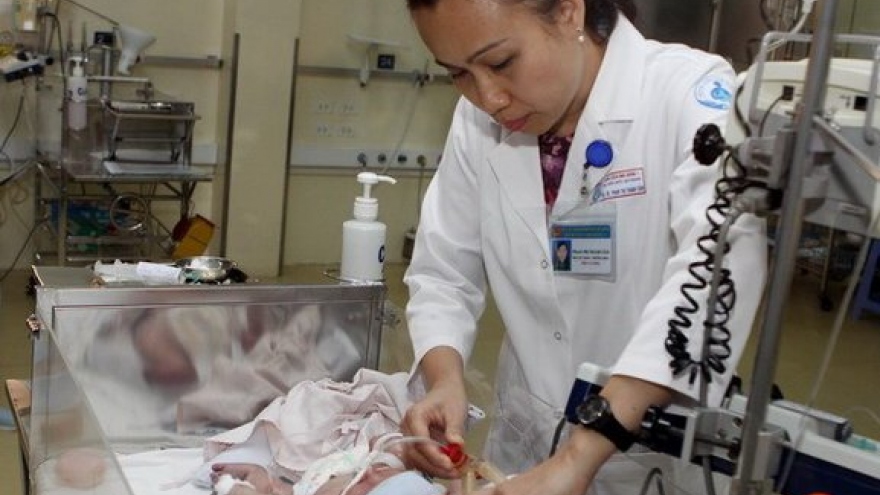Infant mortality rate in Vietnam sees significant decline
VOV.VN - Vietnam has made remarkable progress in the care and treatment of premature infants, successfully saving many babies even under 500 grams and enabling them to grow up both physically and cognitively.

The achievements were highlighted at a meeting in Hanoi on November 14, held in observance of World Prematurity Day under the theme, “Give preterm babies a strong start for a brighter future.”
Organised by the Ministry of Health in collaboration with UNICEF, the event aimed to raise public awareness about the care, protection, and support of preterm infants, ensuring every child gets a healthy start in life.
In his address to the meeting, Deputy Health Minister Nguyen Tri Thuc reported that Vietnam’s neonatal mortality rate had decreased to 9.6%, down from 12% in 2015, thanks to efforts across the health sector. Globally, about one in ten newborns is born prematurely, a figure mirrored in Vietnam.
To further reduce neonatal deaths, particularly those related to prematurity and low birth weight, he said, Vietnam should continue to mobilise resources and strengthen preventive measures as well as safe and effective newborn care.
He stressed that all preterm infants deserve the best possible healthcare and a strong foundation for a bright future, highlighting Vietnam’s goal of giving every child the opportunity to survive, remain healthy, and thrive, ultimately contributing to the nation’s human capital.
According to the World Health Organization (WHO), more than 13 million babies are born prematurely each year worldwide, meaning one in every ten newborns is preterm. Prematurity is reported to be the leading cause of neonatal mortality, accounting for around 1 million deaths annually.
Children who survive prematurity often face long-term health issues, including developmental delays, motor disabilities, impaired vision and hearing, as well as behavioral and learning disorders.
In Vietnam, prematurity remains a major public health concern, contributing to approximately 25% of neonatal deaths. While the healthcare sector has made significant advances in neonatal care, preterm infants remain high-risk and require sustained attention from both the health system and society.
The Ministry of Health has indicated that reducing preterm birth and low-birth-weight rates is not solely the responsibility of the healthcare sector. It requires coordinated action from various ministries, local authorities, communities, and support from domestic and international organisations. This includes ensuring proper healthcare for pregnant women, strengthening primary healthcare services, raising awareness of maternal care, and providing practical support to families.
The Deputy Minister stated that combining international experience with local realities would allow Vietnam to further reduce its preterm birth and neonatal mortality rates while improving the quality of life for preterm infants and their families.



